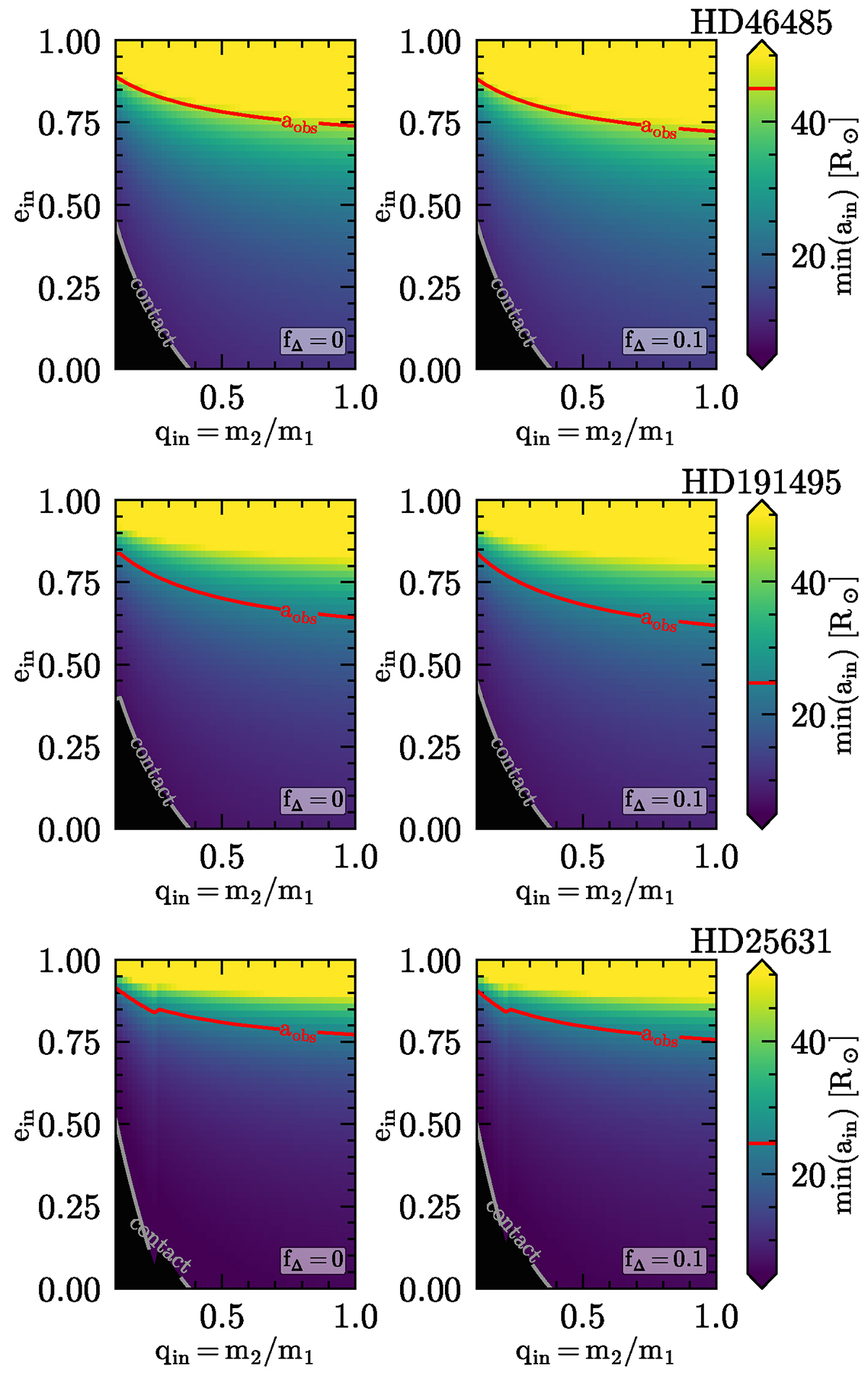Fig. 9.

Download original image
Minimum initial inner binary separation min(ain) to prevent RLOF at periastron at ZAMS (i.e., R1(m1)≤RRL, 1 and R2(m2)≤RRL, 2) as a function of the inner binary mass ratio qin = m2/m1 and eccentricity ein for HD 45485 (top), HD 191495 (middle), and HD 25631 (bottom). The red solid lines mark the present-day observed separation, corresponding to the evolved post-merger aout in the merger-in-a-triple scenario, while the black area in the bottom left corners corresponds the unphysical region with initial inner binary separation with Ri(mi)≤RRL, i. In the bottom row, the boundary of this unphysical region has a kink caused by the change of slope in the assumed mass–radius relation: HD 25631 primary mass is M1 ≃ 7 M⊙, so for qin ≲ 0.2 (the exact threshold depends on fΔ), the expected values of m2 are sufficiently low that the exponent ξ in the RZAMS ≡ RZAMS(m) changes. For the right column with fΔ ≠ 0, our assumptions based on the Blaauw (1961) approximation may be inconsistent (see Sect. 5).
Current usage metrics show cumulative count of Article Views (full-text article views including HTML views, PDF and ePub downloads, according to the available data) and Abstracts Views on Vision4Press platform.
Data correspond to usage on the plateform after 2015. The current usage metrics is available 48-96 hours after online publication and is updated daily on week days.
Initial download of the metrics may take a while.


